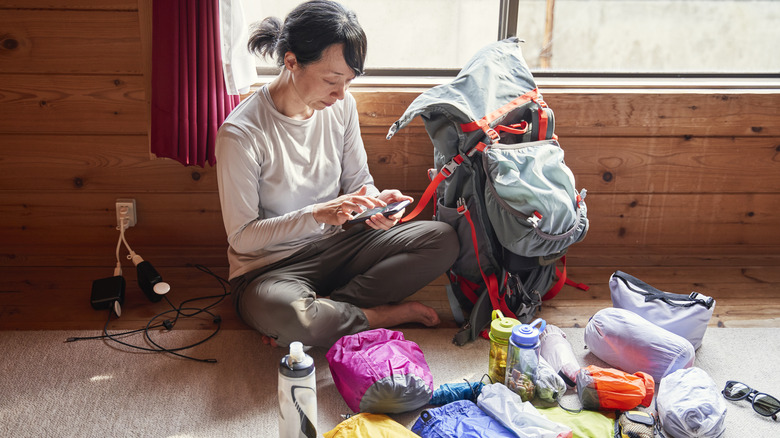National Park Visitors May Need To Do Some Extra Planning During The Government Shutdown
When the U.S. government shut down on October 1, 2025, many people already knew what headaches to expect. This is a bad time to apply for a small business loan, for example. You probably can't replace your Medicare card. Many museums and cultural institutions have shut their doors. Federal employees have to live without paychecks. Americans have been through this kind of gridlock before — there have been 10 government shutdowns since 1976 — and every household is affected differently. Luckily, passports are still being processed, so border-crossing travelers can sigh with relief, and the U.S. Postal Service is working just fine, so you can send a postcard without a hitch.
Perhaps the most visible effects of the government shutdown are seen in national parks. Within the first week, thousands of park employees were furloughed. Most national parks have remained open through October, but staff is limited and likely unpaid. Fewer patrons have meant a catastrophic loss in revenue, both for the National Park System (NPS) and adjacent communities. Meanwhile, visitor centers have closed, services are limited, and online resources aren't dependably updated. For diehard fans of the NPS, the scariest side-effects of the shutdown are vandalism and safety concerns. Natural wonders are vulnerable to spray paint and litter; squatting and risky behavior have spiked.
Even in normal circumstances, park rangers recommend important safety advice to visitors, but this is even more so during such lean and lawless stretches. Regular day-trippers should take extra time to plan their visits, keep up with advisories, and pack everything they need. Many NPS patrons have discovered free entry where there is usually a per-car fee, and unenforced rules can feel liberating. But with freedom comes responsibility, so it's more important than ever to stay safe.
How to plan for a National Park with limited services
Plenty of outdoor enthusiasts will skip over the visitor center when entering a national park. They have no need for museums or brochures, and rely on past experience, posted signage, or GPS to guide them down local paths. Yet a visitor center is also a good muster point, where travelers can find restrooms, fresh water, and flesh-and-blood rangers to ask questions. Many hikers are grateful to leave their cars in a visitor center's well-monitored parking lot. If the center has a gift shop, you may be able to stock up on last-minute trail mix or sports bottles.
When the center is closed, all these amenities go away. You'll need to research your route in advance and budget food, water, and any equipment ahead of time. Many hikers use visitor center outlets to charge their devices, so make sure to top off your batteries before you enter the park, and use this helpful tip to keep your electronics charged while camping. Since you're less likely to consult with an actual ranger, many patrons will use their phones to find information or navigate the park.
The most serious concern, of course, is safety. Many critics urged NPS to close the parks completely during the shutdown, cutting down on emergency situations. The danger is twofold: first, more people will seize the chance to take risks, like BASE jumpers hurling themselves off cliffs and drone pilots erratically flying tiny aircraft without anyone to stop them. Second, lost and injured hikers can't rely on the parks' limited staff for rescue. So if you're going to chance a national parks visit during the shutdown, here are 15 mistakes for tourists to avoid when visiting national parks.

